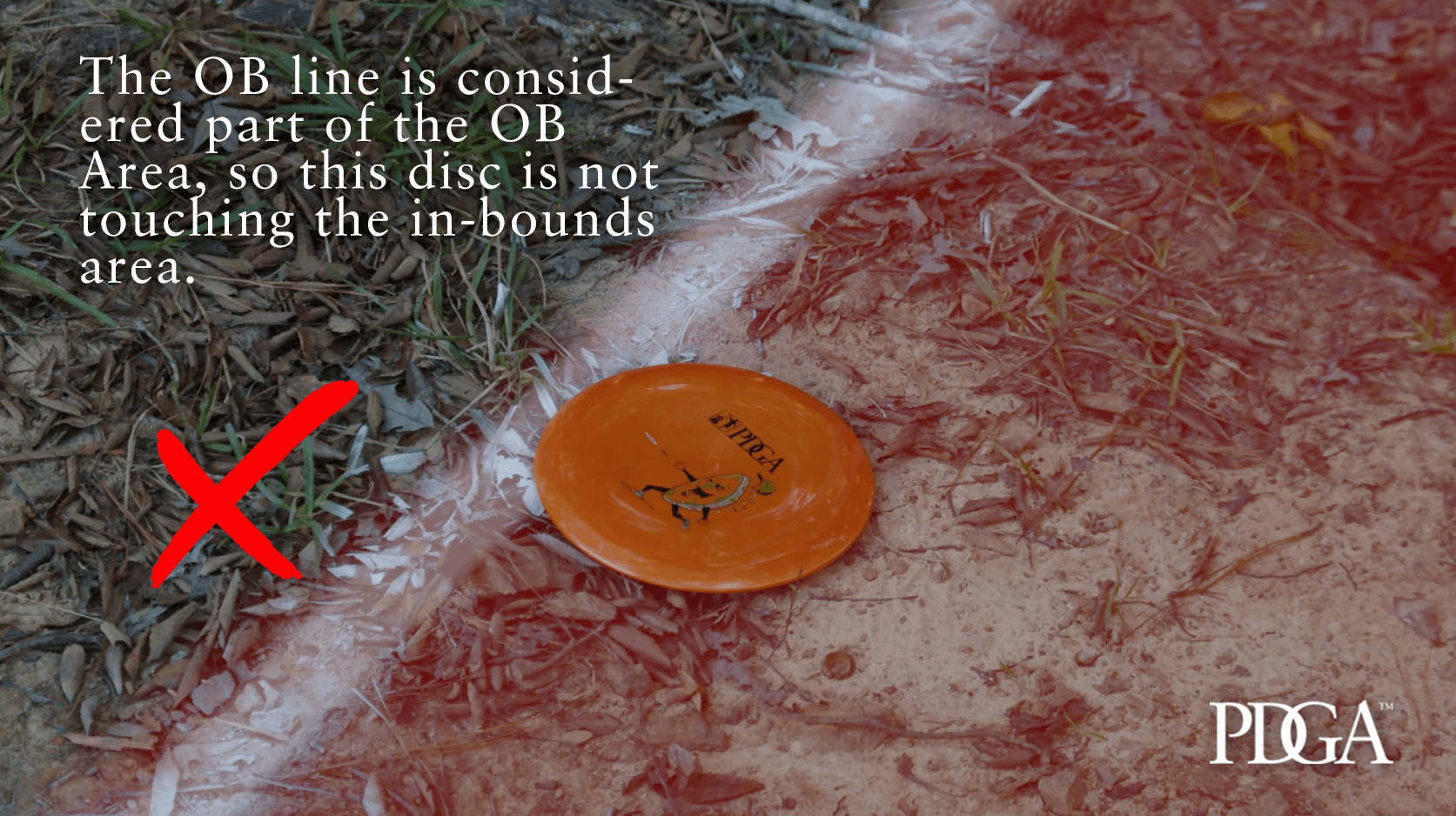Disc Golf Rules School – Episode 6: Out-Of-Bounds
Disc Golf Rules School – Episode 6: Out-Of-Bounds

In the last episode of PDGA Rules School, we examined the putting area and the special rules that are in effect when a lie is within 10 meters of the base of the target.
In this episode, we’ll be looking at Out-of-Bounds (OB) areas, which are another type of regulated area that falls under the Official Rules of Disc Golf Section 806.
An OB area is an area designated by the TD as “off limits”. Landing in an out of bounds area comes with a penalty throw, and shots cannot be thrown from an out-of-bounds area.
OB areas can come in the form of park features like lakes, streams, playgrounds, parking lots or other unplayable areas, or sometimes they are artificially created with ropes or painted lines to add challenge to a course or to keep fairways separated from one another.
In-Bounds or Out-of-Bounds?
Shots are considered out-of-bounds only when they are completely surrounded by the OB area. If any part of the disc is in-bounds, then the disc is considered safe.
The OB line, itself, is considered to be part of the out-of-bounds area, so a disc that is on the line, but not extending past the in-bounds side of the line, is still out-of-bounds.
Similarly, if a disc that lands in the water is completely surrounded by water, then it is considered OB; whereas if any part of the disc is crossing over dry land, then it is considered safe.
If a disc cannot be found and the group agrees that there is compelling evidence that it came to rest out-of-bounds, then the disc is treated as if it was found in the OB area.

Making the Call
If you believe your disc has gone out-of-bounds, you should work with your group to determine if and where it crossed into the OB area.
Make sure to consult with your group before playing your next shot: if the thrower moves the disc before a determination regarding its out-of-bounds status is made, the disc is automatically considered OB.
Whether or not a disc has landed out-of-bounds is determined by the majority opinion of the group. If the group is divided 50/50, then the call should go in the thrower’s benefit.
If there is a questionable call, each member of the group is required to vote — declining to do so is not an option for any player in the group.
The Next Throw
If your shot has been ruled OB, you’ll receive a one-throw penalty added to your score and will have several options for playing your next shot.
The most commonly-used option, by far, is to play from a new lie, marked at any point along a one-meter line extending from the point where the disc was last in-bounds.
Prior to the 2022 rules update, the lie had to be marked along a one-meter line extending perpendicularly from the point where it was last in-bounds, but as of 2022 the one-meter line no longer has to extend perpendicularly, giving the player more flexibility.
Make sure to give yourself enough space for a legal stance, as you cannot have any supporting point touching the OB area when you release your next shot.
If the TD has provided a drop zone for throws landing OB, you may throw from there, instead.
Finally, you may throw from your previous lie. In each of these cases, one penalty throw will be added to your score for the hole. So if you went OB on your tee shot, your next shot will be your third throw (also expressed as “sitting two, throwing three”).
Extra Credit: Optional Relief After Going OB
After going OB and marking a new lie, you may take optional relief without a penalty.
Let’s say there is bad footing next to a creek where your disc went OB - you can take optional relief back from the creek as far back as you care to go - so long as you are on the line of play - and get better footing for your next shot.
To do this, mark a lie anywhere along a one-meter line extending from where your disc last was in-bounds and then mark another new lie back along the line of play, as far as you like, without taking an additional penalty.
Check out our complete PDGA Rules School Video Series on YouTube »
Class Dismissed
For more information visit the Official Rules of Disc Golf and be sure to check back each Thursday for a new installment of PDGA Rules School.
See you out on the course!

Comments
Prior to the 2022 change that
Prior to the 2022 change that makes it possible to mark one's lie within the semi-circle (0ne meter radius), there was the optional relief without penalty provision given to make it possible to avoid some difficulty with a placement on the one-meter perpendicular line (object, awkward terrain, etc). I regarded that as the "close cousin" of the rule concerning 2 violations but only one penalty.
As the optional relief provision existed and remains, it already makes it quite possible to mark the lie in the quarter circle farthest from the target. That leaves us with the quarter circle closest to the target as the object of curiosity. What issue of practicality, sporting principle, or fair-play occurred to the PDGA so as to warrant the grant of that quarter circle closer to the target?